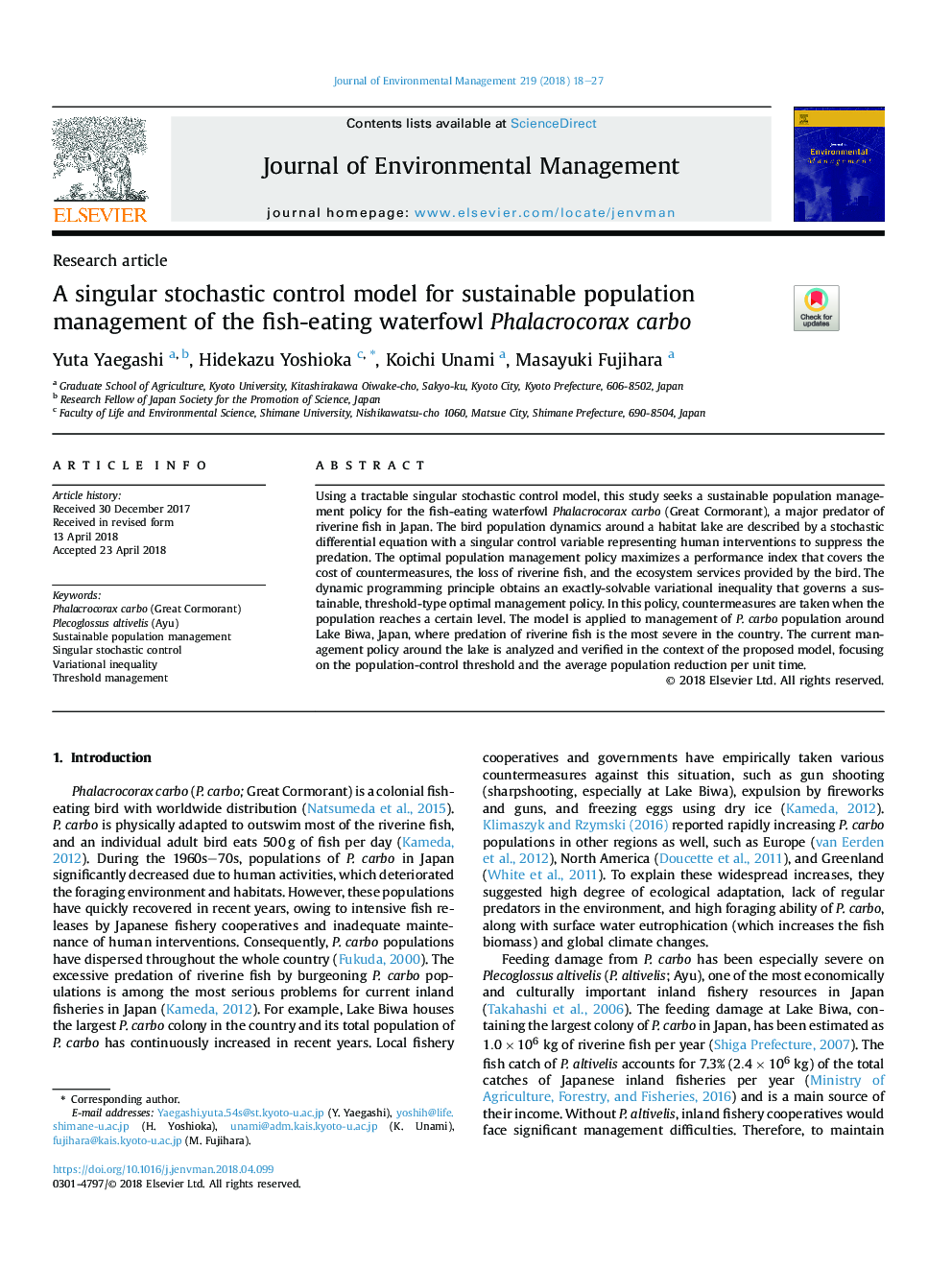| Article ID | Journal | Published Year | Pages | File Type |
|---|---|---|---|---|
| 7476613 | Journal of Environmental Management | 2018 | 10 Pages |
Abstract
Using a tractable singular stochastic control model, this study seeks a sustainable population management policy for the fish-eating waterfowl Phalacrocorax carbo (Great Cormorant), a major predator of riverine fish in Japan. The bird population dynamics around a habitat lake are described by a stochastic differential equation with a singular control variable representing human interventions to suppress the predation. The optimal population management policy maximizes a performance index that covers the cost of countermeasures, the loss of riverine fish, and the ecosystem services provided by the bird. The dynamic programming principle obtains an exactly-solvable variational inequality that governs a sustainable, threshold-type optimal management policy. In this policy, countermeasures are taken when the population reaches a certain level. The model is applied to management of P. carbo population around Lake Biwa, Japan, where predation of riverine fish is the most severe in the country. The current management policy around the lake is analyzed and verified in the context of the proposed model, focusing on the population-control threshold and the average population reduction per unit time.
Related Topics
Physical Sciences and Engineering
Energy
Renewable Energy, Sustainability and the Environment
Authors
Yuta Yaegashi, Hidekazu Yoshioka, Koichi Unami, Masayuki Fujihara,
